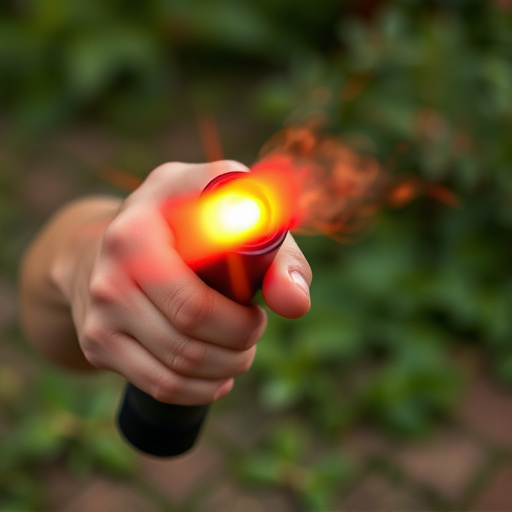Pepper spray, a powerful personal safety tool, temporarily disables attackers but effectiveness varies with wind, distance, and sensitivity. Essential Pepper Spray Defense Training Tips include accurate aiming, understanding range limits, and recognizing immediate disability may not always occur. Scenario-based training simulates real-life situations, teaching users to deploy pepper spray effectively while maintaining calm under pressure. Regular practice enhances muscle memory, and post-application safety protocols ensure well-ventilated areas, soap and water cleansing, and safe distance from threats. Documenting incidents for future reference and legal proceedings is also recommended.
Personal safety is paramount, especially in uncertain times. Pepper spray, a powerful personal defense tool, offers a non-lethal way to deter and disable attackers. This article delves into the intricacies of pepper spray, exploring its power and limitations. We provide effective use cases, scenario-based training tips, and essential safety measures for responsible ownership. Learn how to maximize your pepper spray defense potential while understanding post-incident care for peace of mind.
- Understanding Pepper Spray: Its Power and Limitations
- Effective Use Cases and Scenario-Based Training
- Safety Measures and Post-Incident Care Tips
Understanding Pepper Spray: Its Power and Limitations
Pepper spray is a powerful personal safety tool, designed to disable and deter potential attackers temporarily. When deployed, it causes intense irritation to the eyes, nose, and respiratory system, leading to temporary blindness, coughing, and difficulty breathing. This disruption allows the user an opportunity to escape or gain control of the situation. However, understanding its limitations is just as crucial as knowing its power.
While pepper spray can be an effective defense mechanism, it’s not foolproof. Factors like wind direction, distance from the attacker, and individual sensitivity can impact its effectiveness. Proper Pepper Spray Defense Training Tips include learning how to aim accurately, understanding range restrictions, and recognizing that it may not always disable an aggressor immediately. Knowing these nuances is key to using pepper spray responsibly and ensuring its maximum potential as a personal safety tool.
Effective Use Cases and Scenario-Based Training
Pepper spray is a highly effective self-defense tool when used properly. It’s crucial to learn its application through scenario-based training, which simulates real-life situations. This prepares individuals to respond calmly and effectively under pressure. For instance, training could involve practicing how to deploy pepper spray while escaping from an assailant or how to use it defensively in confined spaces like alleys or vehicles.
Mastering Pepper Spray Defense Training Tips ensures that when faced with a potentially dangerous situation, one can make split-second decisions. This includes understanding the range and effectiveness of pepper spray, proper grip and aim, and post-application strategies such as maintaining distance and seeking medical assistance if needed. Regular practice in controlled environments enhances muscle memory, making real-world responses more effective and safer.
Safety Measures and Post-Incident Care Tips
After using pepper spray for self-defense, prioritizing safety measures and post-incident care is crucial. Always ensure you are in a safe location after deploying the spray, preferably an area with good ventilation to minimize exposure to residual chemicals. Keep a distance from potential threats and maintain your focus on staying calm and out of harm’s way.
For personal safety, wash your face and hands thoroughly with soap and water as soon as possible, even if gloves were worn. This helps remove any remaining pepper spray residue that could cause discomfort or irritation. Seek medical attention if any adverse reactions occur, such as difficulty breathing or prolonged redness and itching. Keep a record of the incident, including dates, times, locations, and any details about the perpetrator, for future reference and potential legal proceedings. Pepper Spray Defense Training Tips emphasize practical exercises and scenario-based learning to enhance your ability to handle such situations effectively while maintaining safety at every step.
Personal safety through pepper spray defense training tips can significantly enhance your ability to protect yourself in various scenarios. Understanding its power, effective use cases, and post-incident care ensures you’re prepared while also mitigating risks. By integrating scenario-based training into your personal safety arsenal, you empower yourself to navigate potentially dangerous situations with confidence and awareness.
